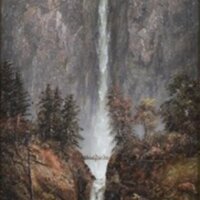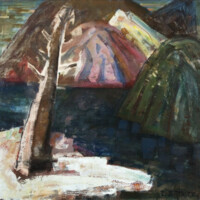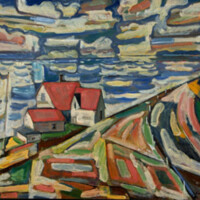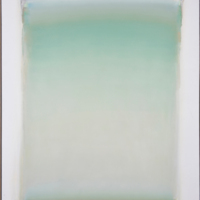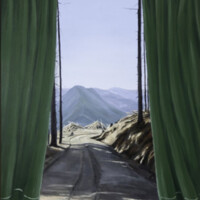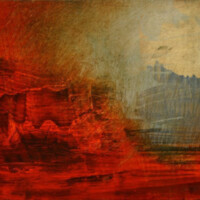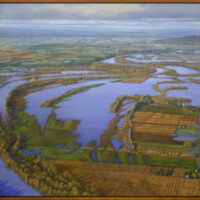A Brief History of Pacific Northwest Landscape Painting
The original artists of this region were the indigenous tribes that were ousted from their ancestral lands as American settlers moved and fought their way westward. Driven by a desire to find lush, cheap land and also a desire on the part of governments and businesses to explore unknown areas, exploration expeditions and settlers alike came to the Pacific Northwest as a new frontier.
Some of this region's first artists were on sea-faring expeditions at the end of the 18th century, for example, John Webber (1751-1793), who trained as a painter in Europe and became an artist aboard a ship in 1776. These artists painted views of the Northwest’s iconic environmental landmarks, such as Mt Rainier, Mt Hood, and Puget Sound.
The indigenous people of the Pacific Northwest were rarely depicted in late 18th and early 19th century paintings. Indeed, even when the Native peoples of the region were included, it was not in a humanizing way; rather, they were seen as “part of the Pacific Northwest’s nature, not its culture” according to Jonathan Raban in Pacific Northwest Landscape: a Painted History (12). To these artists, the aesthetic of this 'virgin' landscape and its lusciousness were more important than the cultures that existed on it. This was the myth of the west- that the Pacific Northwest was a land unmarked by civilization waiting for someone to come and use its abundant resources, when in reality, there were many civilizations co-existing with the land.
Cyberspace Scenery Paintings
Many of those 19th-century artists who came to the Northwest to study and paint it were influenced by the early to mid-19th-century Hudson River School, which was associated with Romanticism. Students of Romanticism who came to the Northwest sought to paint large and lush areas of nature that were mysterious, foreboding, and beautiful. Many saw it as a real-life Salvator Rosa (1615-1673) painting, a 17th-century artist known for his landscapes that were infamous for their lusciousness, beauty, and terror as they showed the unkempt aspects of nature such as River Landscape with Apollo and Cumaen Sibyl from 1655. He depicted the land as it was without meticulously mathematically composing his works. Thus, when others came to the Pacific Northwest and saw the unkempt and luscious nature, Rosa was cited as an inspiration.
As the area became more populated and its economy began to take off, businesses took advantage of the rich land and created the timber industry of today. The land was marked with clear cuts and new roads, causing some artists to paint the timber industry as they saw it.
Though every contribution to the art of the Pacific Northwest matters, the beginning of the 20th century is what changed art in this region for good. Specifically in Oregon, modern art became a mainstay of the Portland Art Museum in the early 20th century. In 1909, schools like the Museum Art School (now the Pacific Northwest College of Art or PNCA) were opened. The art department at Willamette University grew with its head Constance Fowler- and Michele Russo began to revolutionize the art scene in Portland and at PNCA. In addition to this, the Great Depression created programs like the Works Progress Administration or WPA which gave artists jobs to paint for community spaces. After the WPA, artists returning from World War I and II began to innovate. However, above all, abstraction began to find itself in the art scene here and inspired artists to pursue non-representational art and play with the idea of landscape in general. And that is what this exhibit looks at; how landscape has evolved in the Pacific Northwest, its impact on the viewer, and its histories and genealogies.

